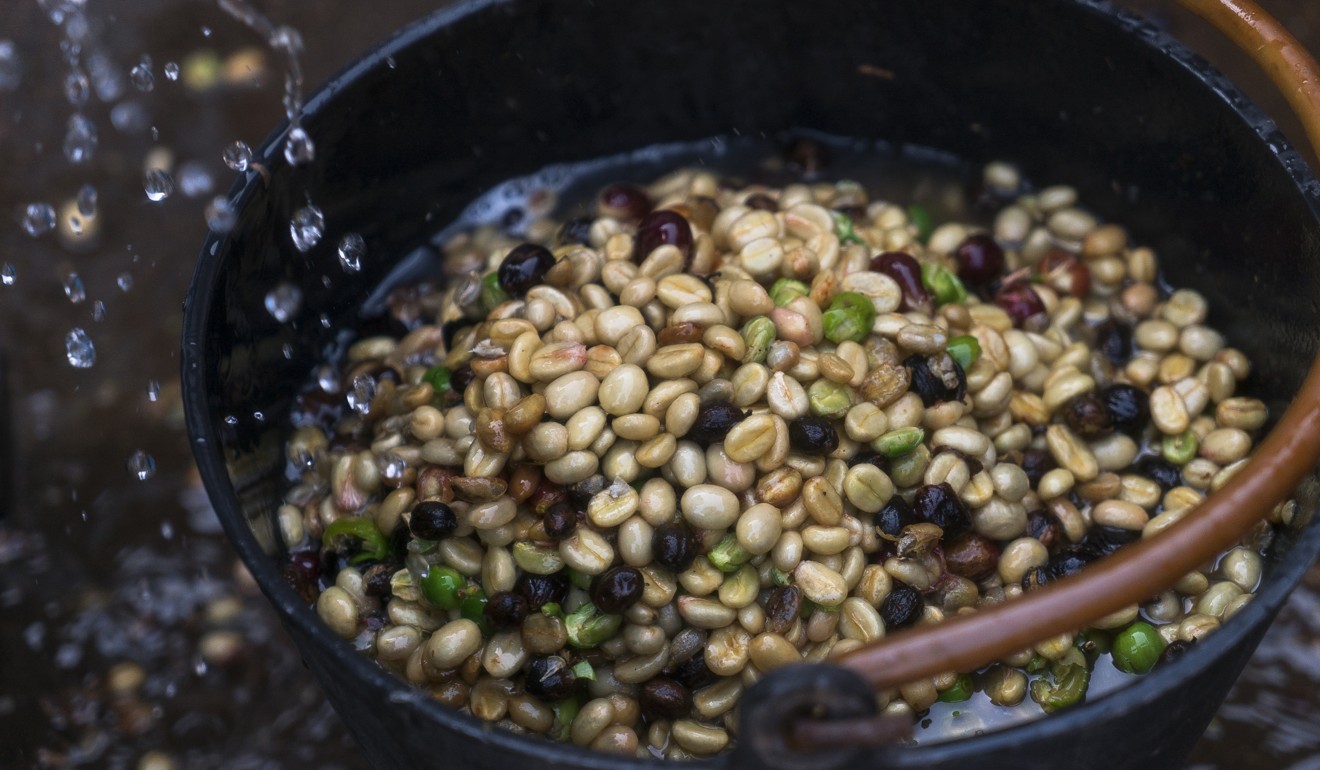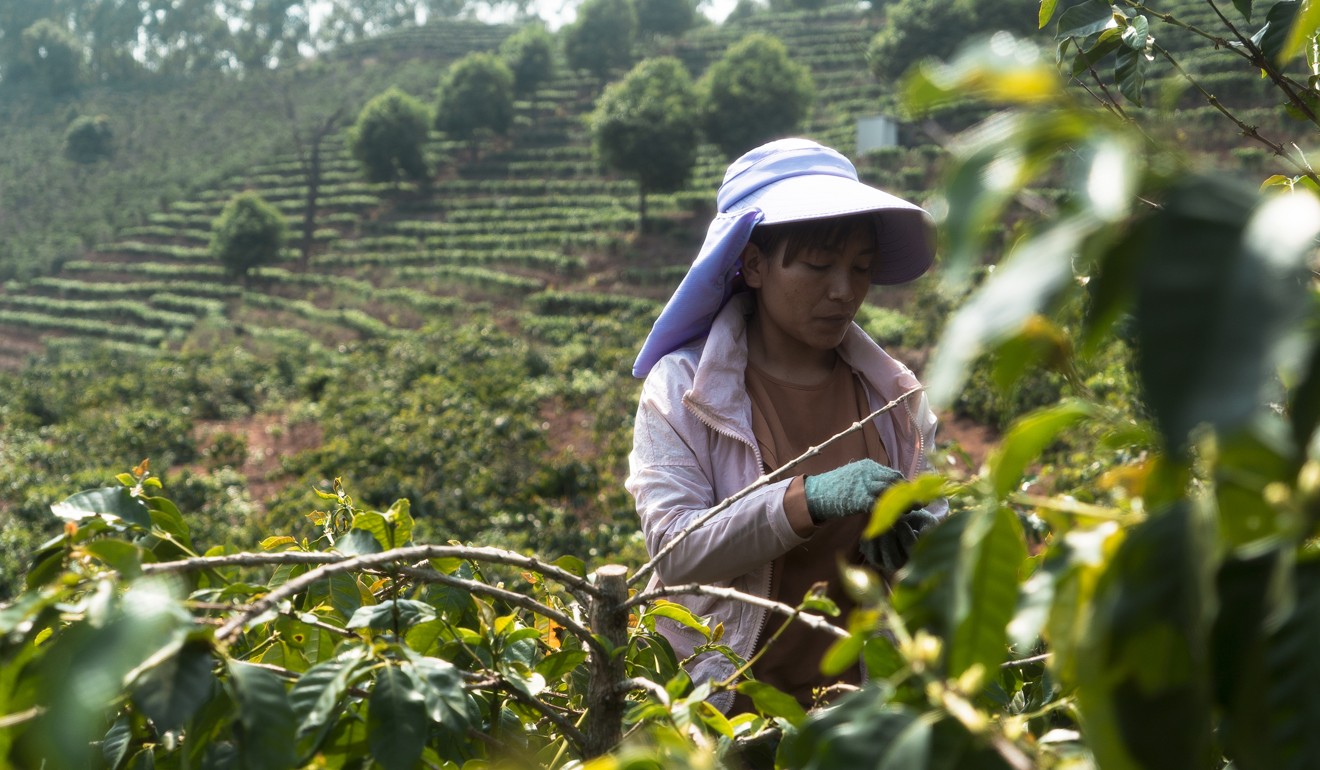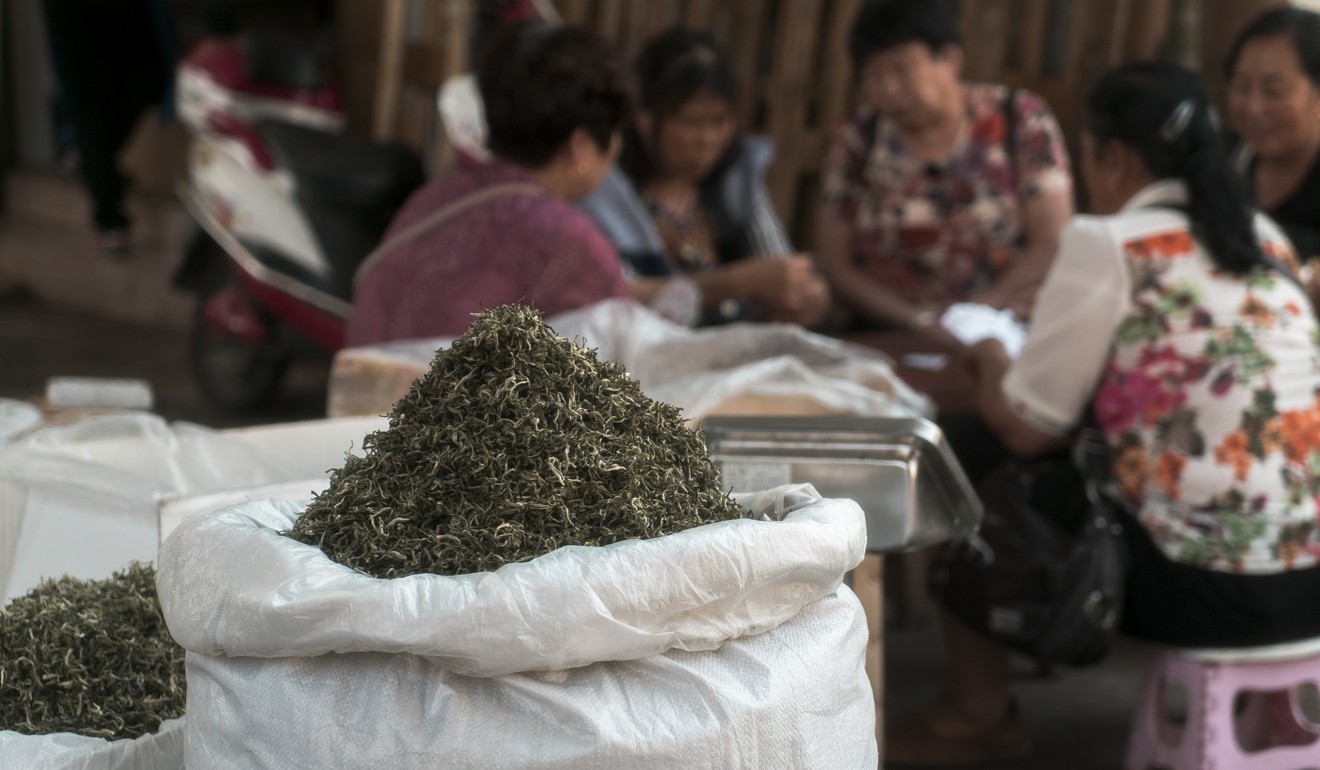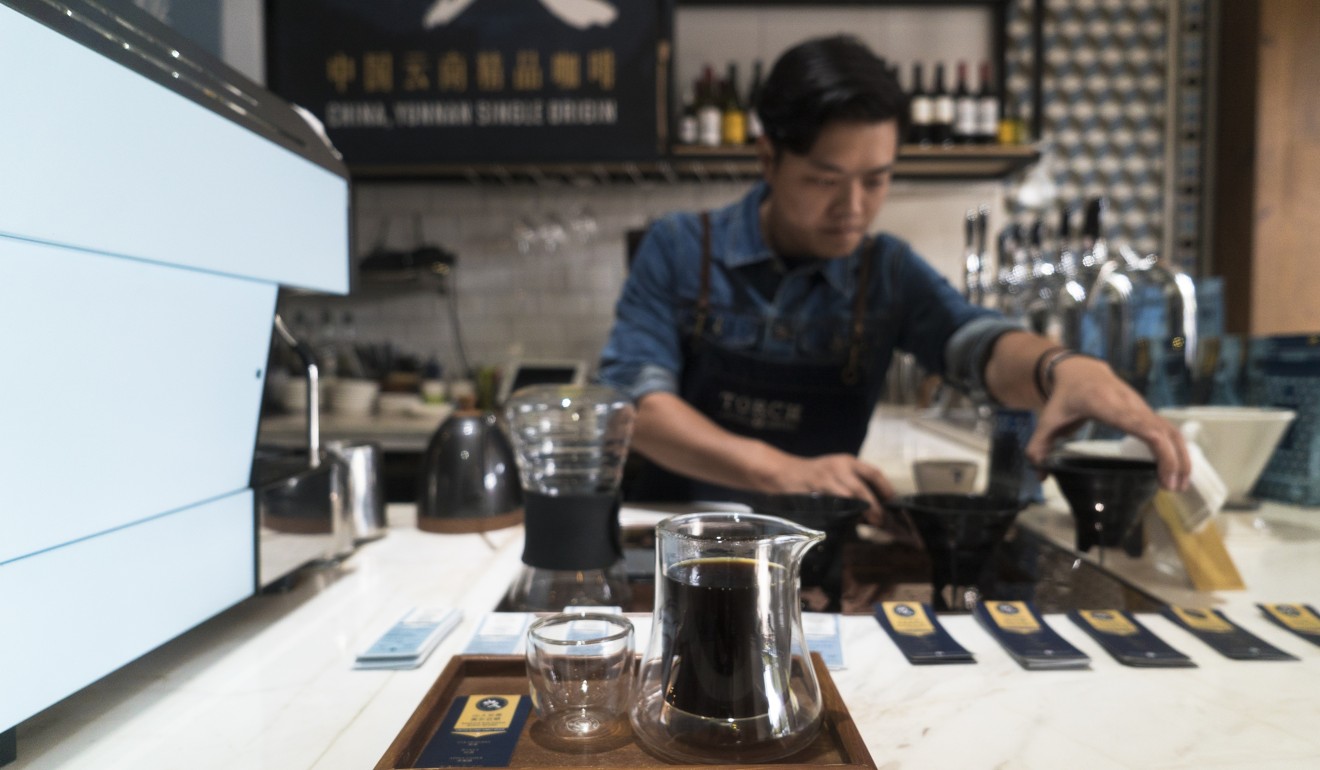
The coffee coup brewing in Puer, China’s famed tea-growing region
As young Chinese turn away from tea, coffee cultivation in Puer – a southern China city known for its fermented tea – has almost doubled in seven years
Yang Yang has been around tea all her life, growing up on a hillside plantation on the outskirts of Puer, a city in rural southern China famed for its eponymous fermented tea.
But she has a dream that underscores a changing mindset here: someday, Yang hopes to open … a coffee shop.
“Tea is what it took my family to feed and raise me,” Yang said. “But coffee is what I’m really interested in.”
Yang is among a young generation of Chinese who are turning away from tea, a traditional drink with a long and complex national history, to embrace coffee, as incomes in China rise and lifestyles become more international.
While Yang’s farm for decades has been a model of Puer tea production, a Chinese speciality and a signature product of Yunnan province, changing consumer preferences have prompted the family to grow coffee as well.
Along the hilly country road bordering the farm run rows of neatly trimmed short tea trees on one side, and a bushy wood of tall coffee plants on the other.
Coffee upstart Luckin looks to take on Starbucks in China with ‘new retail’ model
Coffee and tea farms increasingly appear side by side in the hills of Puer, where the amount of land given over to coffee cultivation almost doubled to 789,000 hectares (1.9 million acres) last year from 439,000 hectares in 2011.
“They can coexist very well,” said Samuel Gurel, chief executive of Torch Coffee roasters in Puer. “It doesn’t seem like the tea culture has any negative effect on the coffee industry.”

Today, more than 50 of the 70 families in Yang’s village, a 30-minute drive from downtown Puer, grow both tea and coffee.
Although the two crops share little in cultural background and history, the similarities in their growing environments are striking.
Broccoli coffee? Five other weird things baristas add to a cup of joe that might be boosting your health
Puer has ample year-round rainfall, and moderate temperatures even in summer. With elevations ranging from 900 to 1,500 metres (2,952 to 4,921 feet), it is perfect for cultivating both crops, each of which are harvested at different times. For instance, Yang harvests her 12 hectares of coffee from November to February, and her 13 hectares of tea from March to October.
It was the prospect of growing coffee that brought Yang back home in 2010 after five years as a migrant worker in the southern city of Shenzhen.

Her parents, who started the tea farm when she was born, supported her proposal to switch to coffee because it was more profitable and less gruelling than growing tea, she said.
“It is much tougher to grow tea, because you have to keep tending the plants for many months,” Yang said. “Tea trees suffer from diseases, but coffee trees don’t.”
Despite its reputation as a tea production centre, Puer has wasted no time moving into the coffee market.
Everest base camp, with its Wi-fi, baked goods and trendy coffee, is a far cry from the old days
It cultivates 60 per cent of the coffee produced in Yunnan province, which is home to 99 per cent of China’s overall coffee production.
Yang has done her share of harvesting the red and purple fruit that contains the coffee beans. Yet she said she had never tasted the coffee made from her family’s labour, because the beans were sold to big foreign brands such as Swiss food and drink behemoth Nestle and giant US coffee retailer Starbucks.
But she said she believed China’s growing coffee market would remain a lucrative opportunity for years to come.

Coffee consumption in China has been growing 15 to 20 per cent annually since 2011, according to a report by Zhiyan Consulting Group.
Lured by China’s huge market potential amid the saturation of its home US market, Starbucks opened its biggest store ever – a 30,000 square foot shop in Shanghai in December.
Fashion meets coffee: how boutiques sell gourmet brews to woo Hong Kong shoppers
Meanwhile, numerous start-ups focused on coffee delivery have popped up in China over the last two years.
The growth is largely driven by young people, for whom coffee is more about the social and cultural experience than the actual drink.

While many still drink tea at home, they prefer to congregate in coffee shops rather than tea houses to socialise, according to Gurel.
“They are going to take a photo of the coffee and chat with friends,” he said. “It’s a place to hang out and it’s a community.”
For instance, Li Weiyao, 24, who helps out on his father’s tea farm in Puer, drinks tea at home but chooses coffee when he hangs out with friends.
Starbucks founder Howard Schultz is retiring, and may be brewing a run for the US presidency
“Coffee feels young and trendier,” Li said. “Even though I like tea a lot, too.”
To maintain their share of China’s expanding coffee market, farmers in Puer aim to improve product quality. That shift may mean switching to producing speciality coffee rather than the regular coffee they supply at low prices to the big brands.

Speciality coffee is made with beans from a single origin – meaning it is grown within a single known geographic area, such as an individual farm, or a specific collection of beans from a single country. Special harvesting and processing techniques are required to produce its distinctive taste.
While the price of regular coffee beans plunged to a record low of 15 yuan (US$2.35) per kilogram this year from 40 yuan just six years ago, speciality coffee was still sold at 40 yuan to 50 yuan per kilogram, Gurel said.
South Korean coffee shops disgruntled at new recycling policy
Although speciality coffee accounts for just 1 per cent of the production in Puer, growers are increasingly considering transitioning to it, including Yang.
Yang said the change would be worth it, even if production costs rose from having to pick the coffee beans selectively and improve processing.

Chen Wen, who owns three coffee shops in the southern city of Zhuhao, said he had seen a surge in customer orders of speciality coffee in the past two years, a major change from just six years ago when most consumers were ordering lattes or cappuccinos.
But customers who wanted speciality coffee tended to prefer overseas varieties, such as Ethiopian Yirgacheffe, he said.
“With the same amount of money, people usually want more exotic varieties,” Chen said.
Made in Hong Kong: tea-infused craft beers at city’s smallest microbrewery
Gurel said Puer needed to improve its coffee brand image.
“I wish I could tell you Puer had a great brand image, but it doesn’t,” he said. He attributed the problem to the local government’s marketing of area coffee as “China coffee” instead of “Puer coffee”.
“If Puer can use the famous brand it has in tea and try to brand Puer coffee versus Chinese coffee, I think it would be very effective,” he said.

